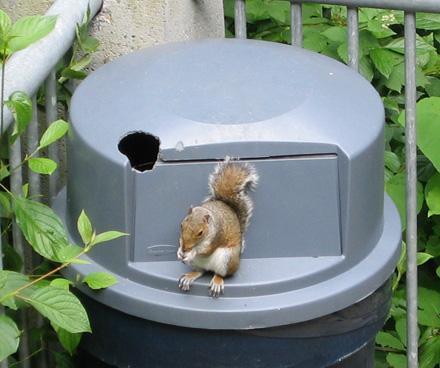NEWWinter Weather and Animals
Tue, 01/06/2009
The length of the day is determined by the tilt of the earth and the position of the earth in relation to the sun during the year. Our solar calendar, invented during Roman times with final modern adjustments made by Pope Gregory in 1582, has determined when winter falls. So even though the weather may seem like winter in November, the calendar is based on arithmetic (counting the days as basic units of time) and the seasons on solstices and equinoxes, dividing the year into 4 parts. Winter officially began on December 21 at the winter solstice, the shortest day of the year.
Animals and humans prepare for the cold weather in similar ways. We turn on the heat, get out our warm coats and recently, like in other parts of the country where blizzards are more common, we buy extra food in case a storm comes that keeps us from going to the store. Some animals grow warmer coats for the winter and create places to stay as warm and dry as they can. Some store up food for the winter and many eat as much as they can all summer to get fat to survive the winter. Some curl up and sleep the winter away. Birds and a few other animals migrate to warmer places until the cold weather is gone.
Most squirrels build nests of warm leaves high up in trees to sleep away the winter. Squirrels take lots of naps during the winter. On a warm winter day, the squirrel wakes to look for the little stores of nuts buried away for winter snacks. Most animals prepare for winter by changing their bodies - accumulating body fat is the most crucial, and replacing thin summer fur with thick winter fur. Many animals, like raccoons, spend the fall feasting on rich foods that help them put on an insulating layer of fat beneath their skin. This fat can also be used as an energy reserve because food can be hard to find in winter. These are the animals that adapt for winter.
Other animals sleep during winter. Cold-blooded animals (e.g., insects, reptiles, amphibians, and fish) must hibernate if they live in environments where the temperature (and therefore their own body temperature) gets below freezing. Reptiles like lizards and snakes seek protective cover under rocks, leaves and logs or woody piles. Turtles that live in the water and frogs usually burrow into the muddy bottom of the pond to hibernate.
Finally, many birds and some land animals migrate in the winter. The biggest advantages of migration are related to food and breeding. The longer days of the northern summer provide more day light hours for breeding birds to feed their young, which is why they go north to breed. The longer daylight hours allow migratory birds to produce more young than related non-migratory birds that remain in the south year-round. As the days shorten in autumn, the birds return to warmer regions where the available food supply varies little with the season.
Like these resourceful animals, let's all stay warm this winter.


